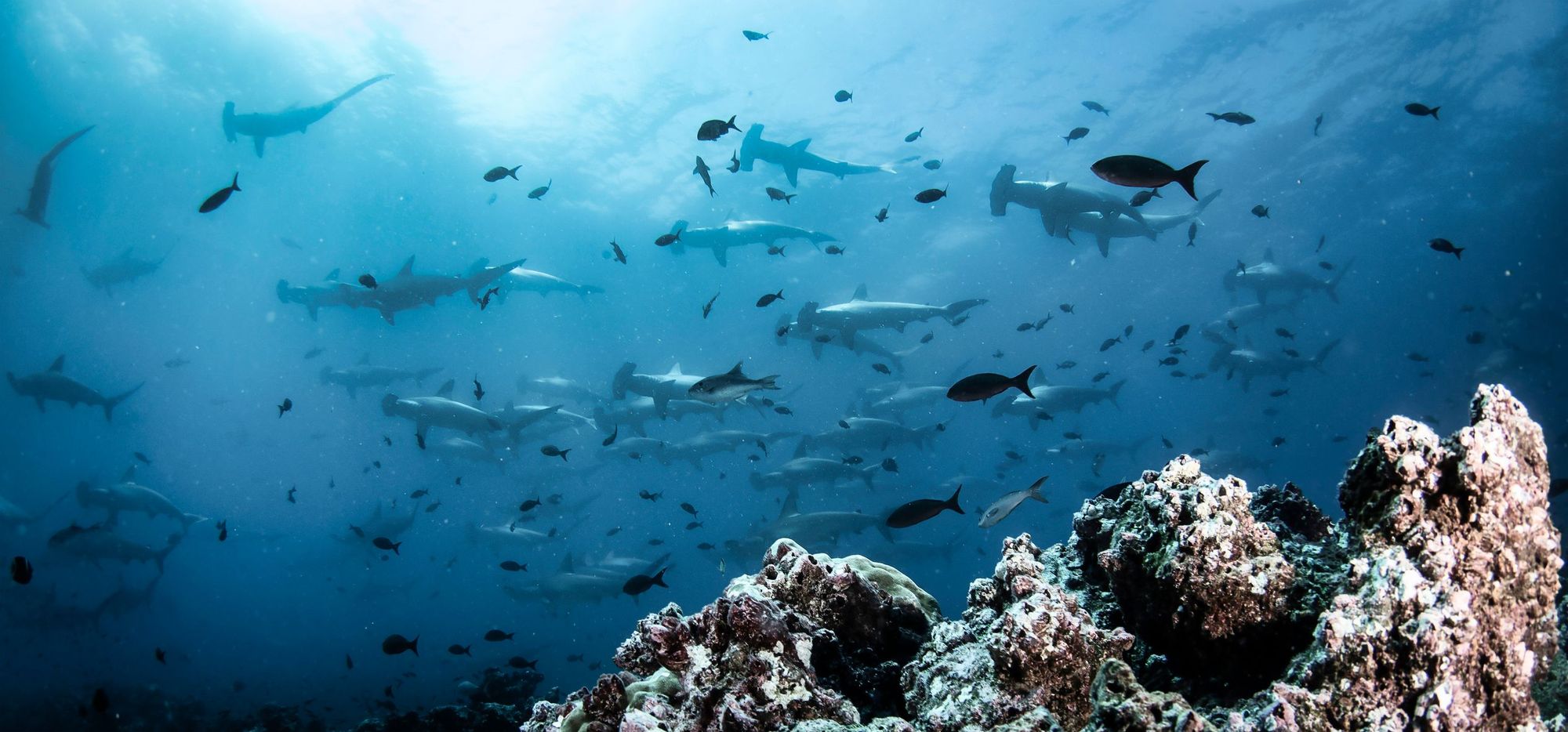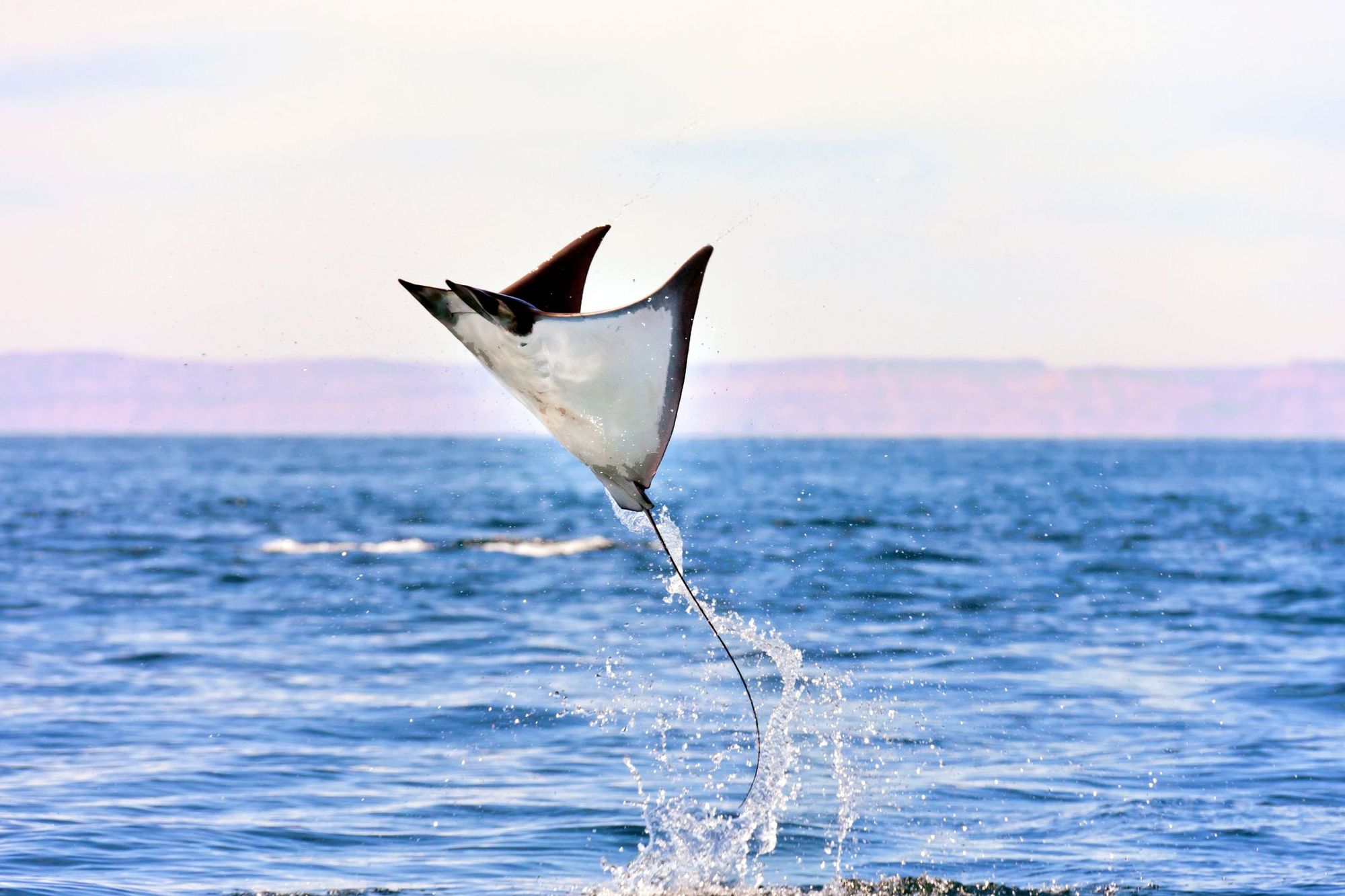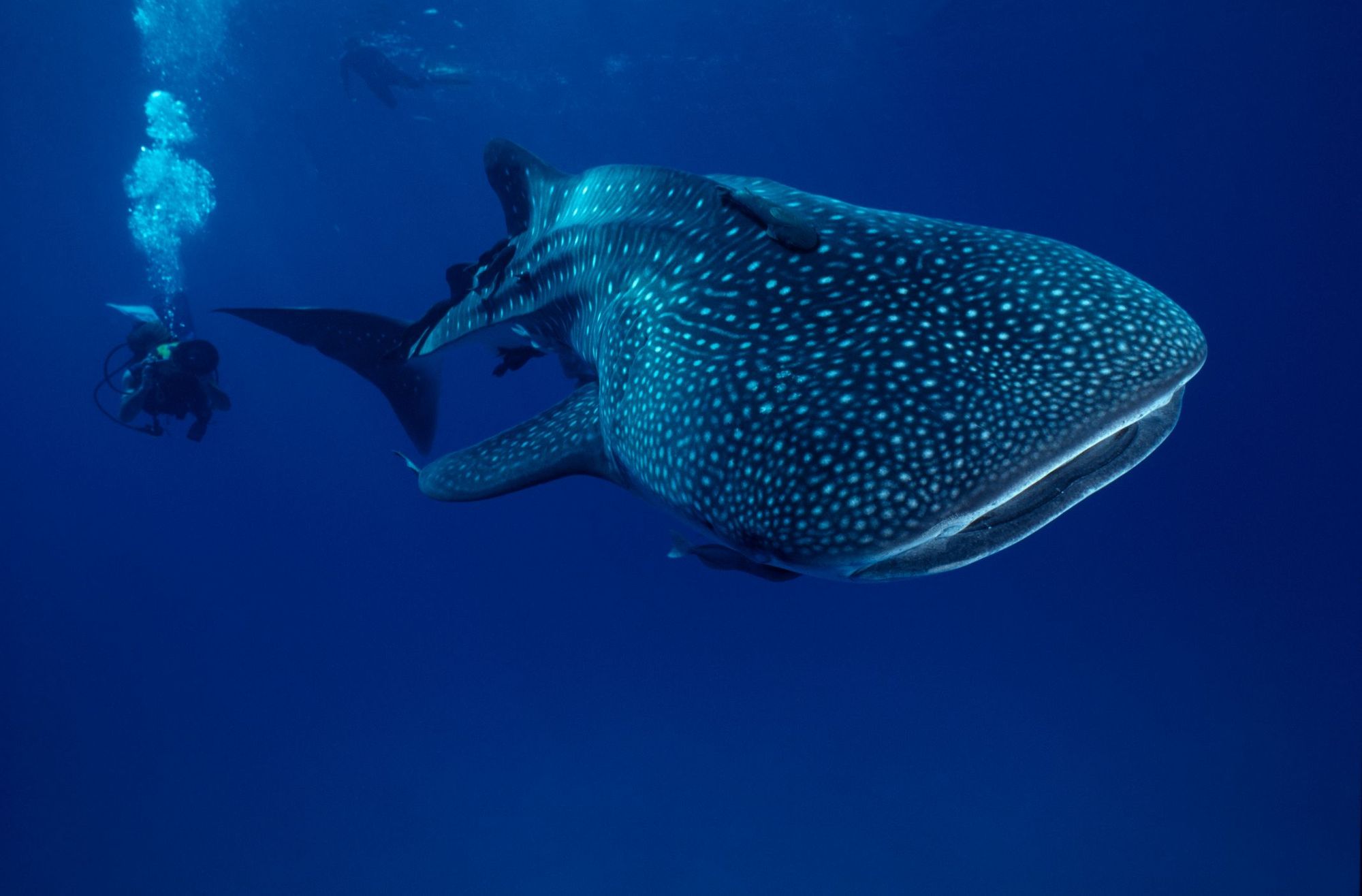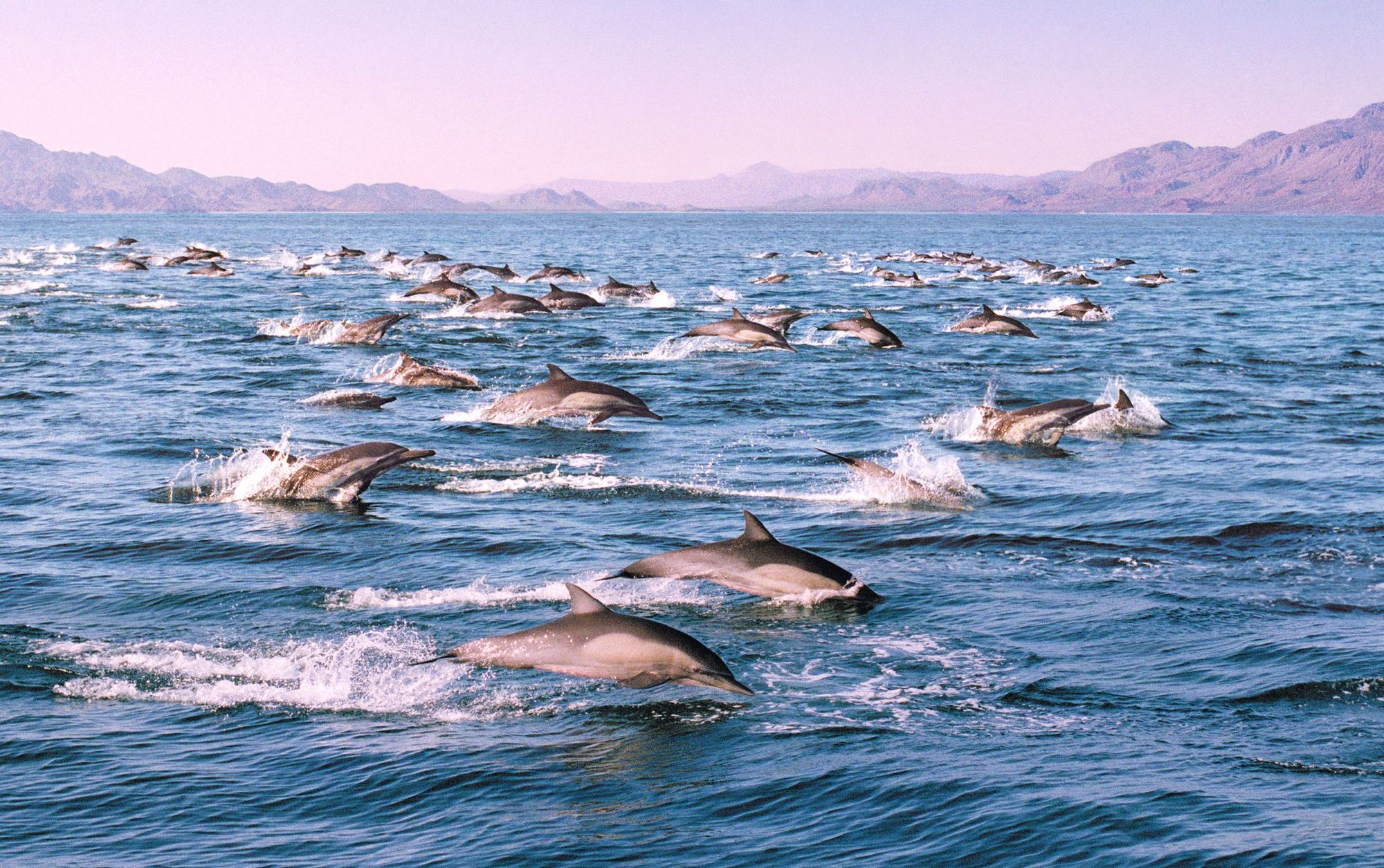The French environmentalist Jacques Cousteau once described Mexico's Sea of Cortez, also known as the Gulf of California, as “the world’s aquarium”. The combination of the temperate waters to the north of the gulf and tropical, warmer waters to the south create incredibly productive waters, which have led to comparisons to the Galapagos Islands. Swimming beneath the surface you can see whale sharks, bull sharks, hammerheads, manta rays, dolphins, schools of tuna and an abundance of other species.
In total, around 900 species of fish have been recorded in the UNESCO World Heritage Site, which comprises 244 islands, islets and coastal areas in total.
Mexico is in a position to become a beacon for community-led management through ecotourism, stimulating a sustainable use of marine resources.
The city of La Paz, on Mexico’s Baja California coast, is the tranquil gateway to this beauty. The waterfront area, known as the Malecón, is soundtracked by seabirds and sprinkled with statues - of a mermaid, hammerhead sharks, whales and even Jacques Cousteau himself. From here, you can head out to the legendary Isla Espíritu Santo, an otherworldly archipelago where sea lions play amongst lush coral reefs.
While the waters remain amongst the most productive in the world today, the Sea of Cortez has seen drastic changes in the past century. Where once it would’ve hard to visit El Bajo - on the fringe of La Paz Bay - without seeing hammerhead sharks, this beautiful species and many others were largely eradicated from the area due to fishing licences handed out in the 1990s. This devastated both endemic species and the local economy - parts of which relied on the tourism to the area of divers wishing to see those sharks.
The area, to first-time visitors, seems simply abundant with life. But shifting baseline theory should be considered here - the theory that reminds us that conditions are generally only monitored, or judged, from their present state, rather than in their historical context. Seeing one hammerhead shark today would inspire romanticism in most, for example, but in the 70s and 80s, you could literally have seen hundreds of hammerheads on every single dive.

Dr. James Ketchum is the co-founder of the environmental NGO Pelagio Kakunja who work to protect marine life in the area. He told an International Ocean Film Festival panel: “I was a divemaster and I remember seeing hundreds of these hammerheads, and I remember seeing their decline. And the same with tuna and sailfish [...] This isn’t just happening here, either. It’s a worldwide problem.”
It’s not too late, though. The hammerhead nursery is regenerating thanks to the work of people like Dr. Ketchum, and with appropriate protection, this incredible area can return to the full wonder that made it so famous to start with.
The rise of the Sea of Cortez
It was in 1940 that John Steinbeck, author of The Grapes of Wrath and Of Mice and Men, journeyed along the Gulf of California with marine biologist Ed Ricketts, later immortalising his experiences and the place itself in the non-fiction book The Log from the Sea of Cortez.
“Below the Mexican border the water changes colour,” he wrote. “It takes on a deep ultramarine blue - a washtub bluing blue, intense and seeming to penetrate deep into the water.” Steinbeck writes of a large shark which “cruised about us, his fin high above the water,” of large horned sharks, hammerhead sharks, basking sharks and “great numbers of sand sharks,” as well as great manta rays, sting rays, tuna, swordfish, urchins, morays and so very much more.

No wonder that La Paz, next to this lush, incredibly deep gulf of water, became the diving capital of the world a few decades after Mr. Steinbeck’s visit. This was also due to Dr. Peter Klimley, who discovered a hammerhead shark school in the area in 1970, and to the terrific underwater filmmakers of the time - Stan Waterman and Howard Hall being just two of the creatives who captured the world living under the Sea of Cortez in the 1980s. La Paz thrived as people came to see those sharks, and it suffered when they were fished out of the area, too.
Today, due to the work of marine biologists and the local community, and the establishment of marine protected areas (MPAs), fish populations are on the rise again in the Sea of Cortez. While overdevelopment is always a risk, tourism can and must help this cause, offering fishermen - and the local community - a decent, viable alternative income to fishing, and helping to add value to living, breathing hammerhead sharks which eclipses their value when dead.
Dr. Ketchum is one of the key scientists active in this area today. “Working with artisanal fisherman is very important to us,” he said. “It’s critical. Because they’re the ones that are going to be here all the time. They live here. They’re from here and they’re the users of this area. They’re aware that conservation is needed [...] but they also need to live and to get an income.”
The worth of sharks
A 2021 study hailed the opportunity for rich areas of marine biodiversity to become “attractive destinations for non-extractive activities such as diving tourism”. It found diving tourism in Mexico - not including other forms of adventure tourism - is estimated to be worth between $455-million and $725-million annually. This is comparable to the fishing industry in the country.
“Diving tourism has evolved from a niche activity to a thriving industry that lures practitioners with the promise of experiencing pristine wildlife encounters,” reads the study. The crucial point here is that this tourism - and the money that comes with it - relies on a healthy reef.
It goes on: “Mexico simultaneously has high untapped ecotourism potential and the need for a sustainable strategy that delivers growth in both the economy and environmental conservation. Therefore, Mexico is in a position to become a beacon for community-led management through ecotourism, stimulating a sustainable use of marine resources.”

The link is often very direct. Tourists pay a local tax which helps fund the government agency that provides the monitoring and management program for sustainable tourism, for example. Every boat company giving shark tours requires a permit, with boat drivers and guides needing to pass exams and meet strict guidelines, and all tourist operators work with authorities to produce information regarding the monitoring of whale shark activity in the area.
It’s said that many fishermen can make more money in three hours taking tourists out to dive spots or out on wildlife outings than they would make in a week fishing them up. But of course, it’s not all so simple to switch trades - there are still barriers to break down, trust to be earned, as well as costs (and time) involved in the alteration of boats built for fishing to host tourists, and in the training to learn customer service best practices and tourist guidelines.
We have made our mark on the world, but we have really done nothing that the trees and creeping plants, ice and erosion, cannot remove in a fairly short time.
Still, there can be no doubting the value of these sharks, not just in financial terms, but also ecological. The removal of sharks from an area of high density leads to inflated populations of mid-range predators, such as barracuda, who feed on grazers. This in turn leads to the elimination of grazers in the water, which leads to a build up of algae on coral reefs, and subsequently, the death of the reefs. Ergo, the loss of sharks causes the loss of reefs.
Sharks are also another form of blue carbon - sucking carbon dioxide out of the atmosphere. The animals are made up of 10-15% carbon, and when they die, that carbon sinks with them. If they're fished up, then their carbon is fished up too.
Steinbeck had understood this connectivity in 1940, on a philosophical level, at least. “It is a strange thing that most of the feelings we call religious, most of the mystical outcrying which is one of the most prized and used and desired reactions of our species, is really the understanding and the attempt to say that man is related to the whole thing, related inextricably to all reality, known and unknowable,” he wrote in The Log from the Sea of Cortez.

Steinbeck would go on to write: “We have made our mark on the world, but we have really done nothing that the trees and creeping plants, ice and erosion, cannot remove in a fairly short time.” This idea embodies the principles of modern rewilding - stepping back and allowing nature processes to run. There are successful, recent examples of exactly this working in the Sea of Cortez.
The area of Cabo Pulmo, on the southeast of the Baja California peninsula, is the perfect example. Up until the 1980’s, this area was a dreamland of wildlife and biodiversity, but overfishing - and irresponsible tourism management - led to the destruction of the environment in the area. Then, in 1995, Cabo Pulmo was declared a Marine National Park. Over the next 10 years, the biomass of the reef increased 463%, and whale sharks, giant manta rays, humpback whales and marine turtles returned. In 2005, it was named a UNESCO World Heritage site.
This stunning success is proof of Steinbeck’s quote, and of the power of nature.
The shark breeding grounds are returning to the bay of La Paz, and they are being carefully protected by CONANP. There are sea turtles thriving around Espíritu Santo, which was named a national park in 2007, with proper protection, and with the enforcement of those precautions too. Whale sharks circle in the vicinity of these national parks still - and they are luring yet more visitors to the area.
It will take time for the Sea of Cortez to return to its full glory - but it’s on the path. Anyone who visits the Gulf of California now, and sees its beauty, will immediately be in awe that this place could have once been so much more biodiverse than it is now - and understand why it must be protected.
Inspired? Check out our range of adventure holidays in Mexico now!

